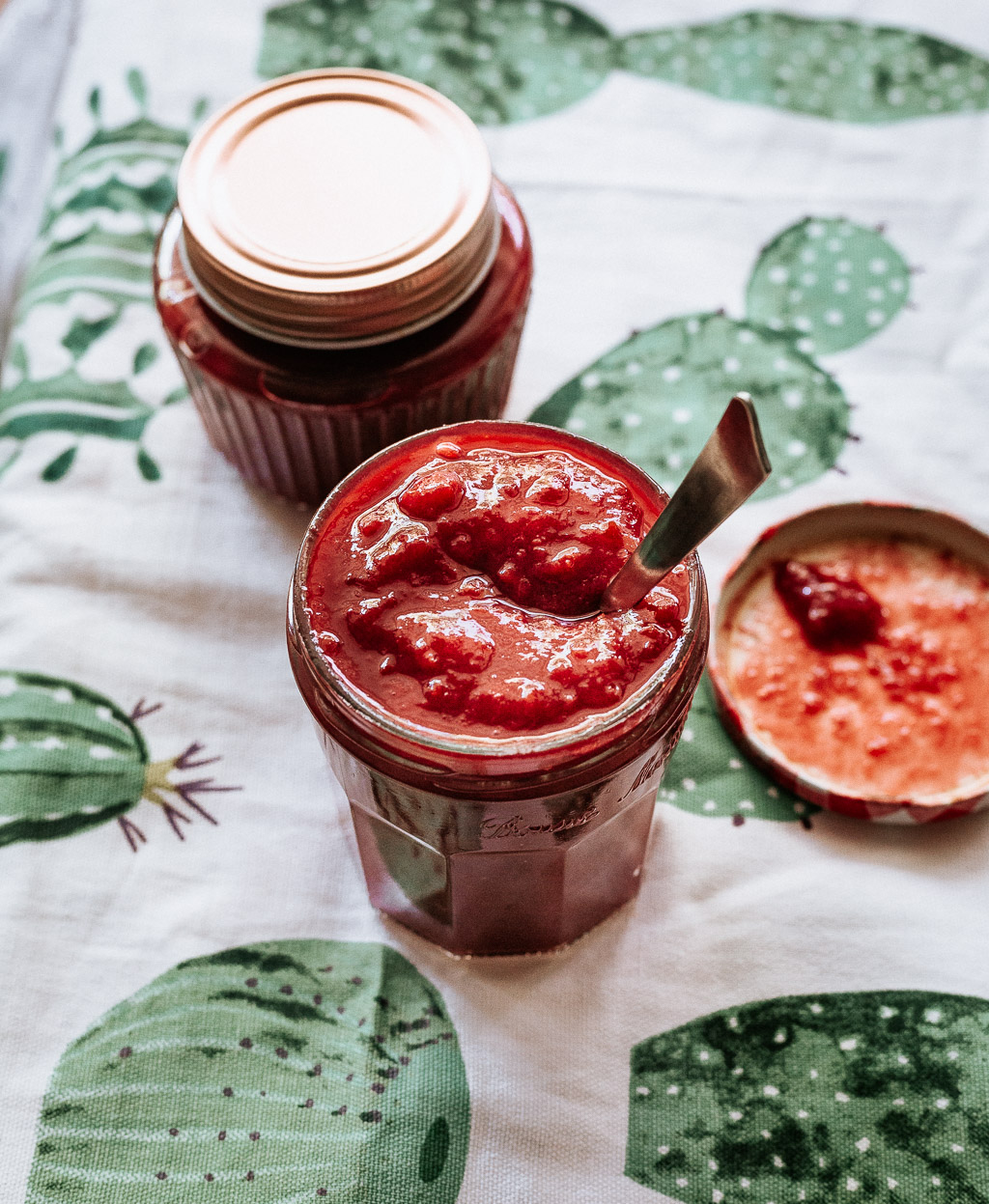
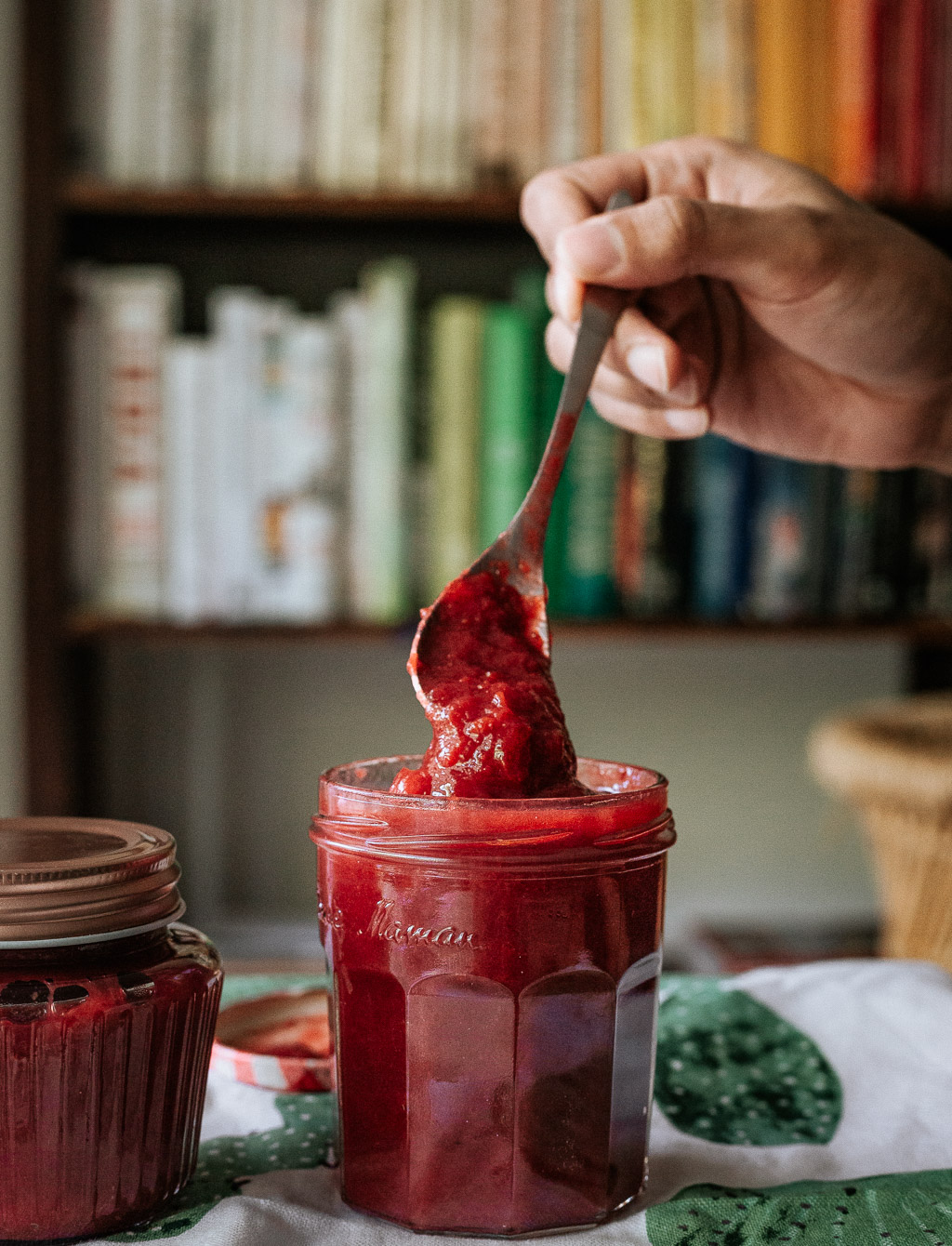
I already have a recipe for plum jam on here, and while there’s absolutely nothing wrong with it and it’s one that I’ve been making for years, this is an updated version. (I will be taking down the other post). Is it just me or do you tweak your own recipes more than you try new ones?!
Making jam is not as hard as people make it out to be. My husband and I eat jam every day for breakfast—on toast, in porridge, spooned over French toast—which might explain why I make a batch every two weeks: grapes (black or green) during the months of Feb-May, plums around these mid-summer months, and strawberries at the end of the year. While the process is simple enough and uses so few ingredients, here are a few things I’ve learned along the way. (I say ‘learned’ lightly but many a time this meant salvaging massive punnets of strawberries from pushing the boundaries of their macerating capacities—“this worked! let’s try three more hours”.)
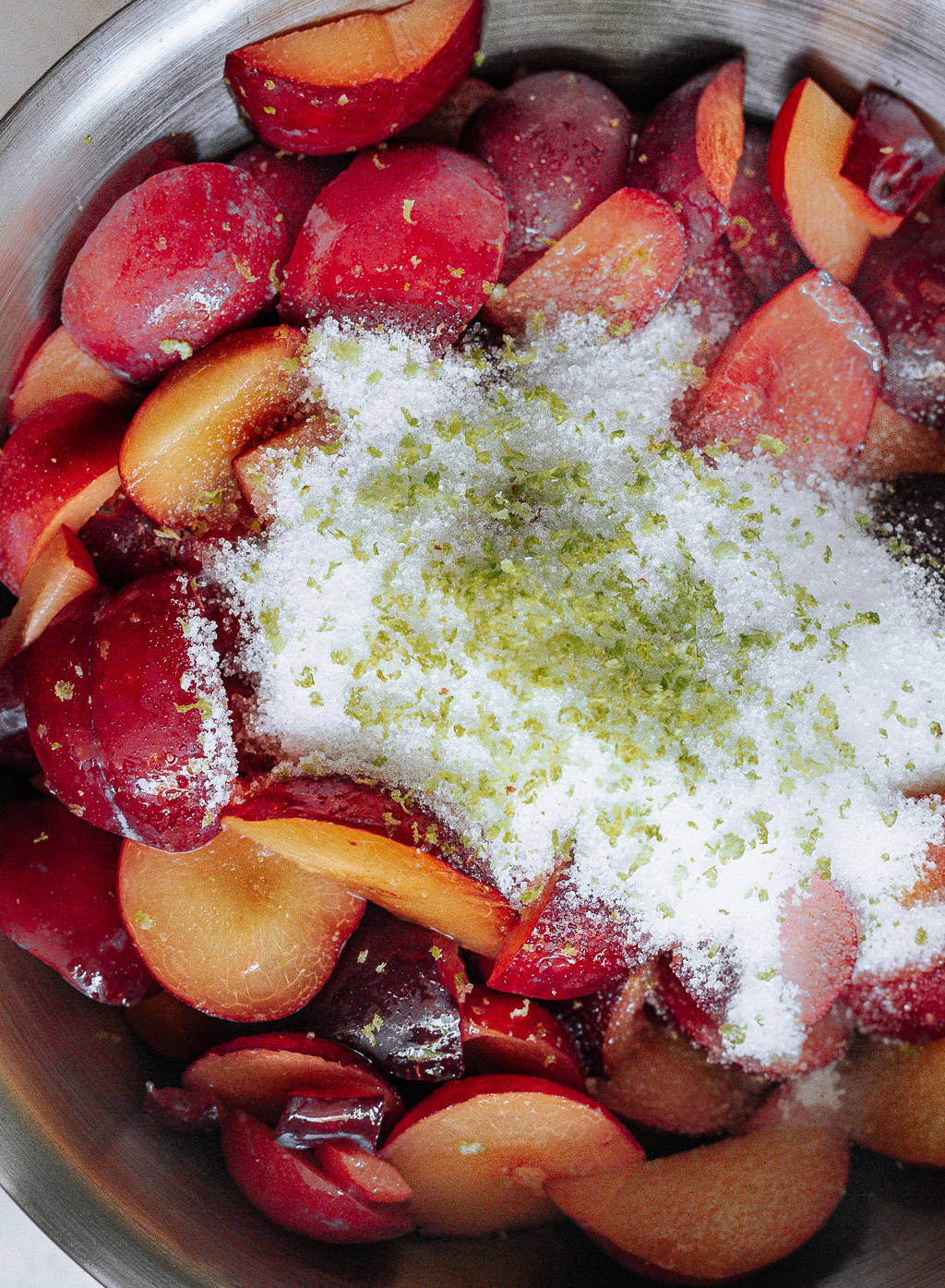
Macerating: sounds cheffy but all it entails is tossing your fruit of choice in sugar (with or without additional flavourings like vanilla, lemon zest and sometimes even liqueurs), and letting it sit for a few hours in the fridge. (Note: macerating times would change depending on the fruit you’re using. Hardy fruits like plums can withstand an entire day whilst softer fruits like strawberries will get too mushy with extended periods. There’s a sweet spot for each.) Maceration does a couple of things: the added sugar draws out the natural sugars in the fruit and softens them, thereby intensifying their fruity flavour. Wine-making follows a similar process to bring out the flavour compounds and vivid colour of grapes.
As the plums steep in their fragrant sugar bath, they leach out a lot of their liquid which you’ll see collected at the bottom of the bowl. All this is flavour and will get cooked down with the jam. Maceration also significantly reduces cooking time of the jam. If it cooks down faster, your resulting jam will have a fresher flavour. If macerating didn’t have everything going for it already, it’s also a great way to reduce sugar quantities in jam-making.
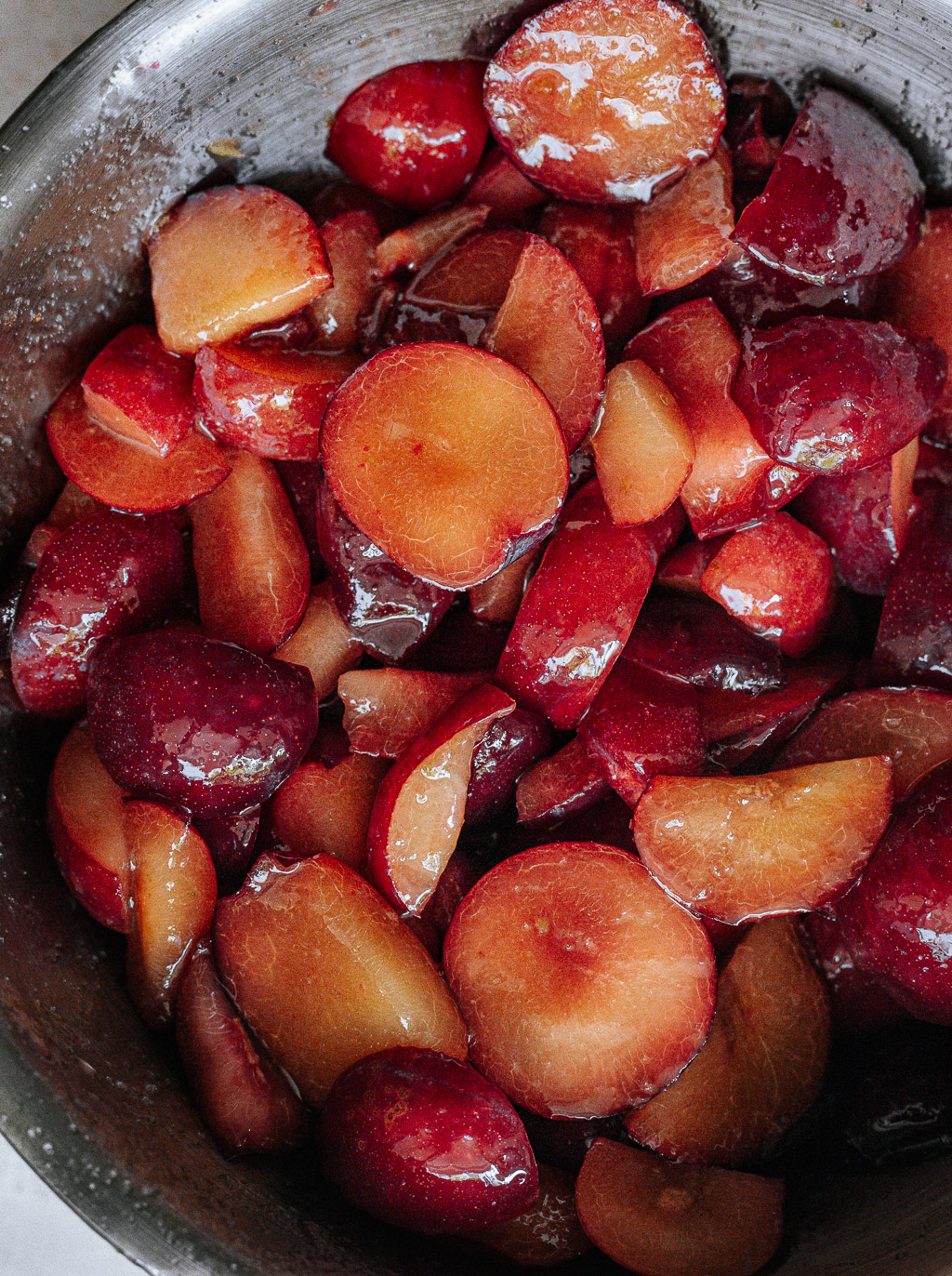
Pectin content: although it’s pretty much the same standard cooking principle for most jams, it’s important to figure out the pectin content of your fruit. And especially so if you want to use less sugar and don’t want to be messing around with adding pectin from a packet. Pectin is a type of starch that’s found naturally in cell walls of fruits and vegetables and it’s what gives them their structure. So in this application, the higher the pectin content in your fruit, the better your jam will set; lower the pectin, the runnier your jam will be. If your fruit has a low pectin content, you can still make jam with it of course, only, depending on how low it is, you might have to add extra sugar and/or store-bought pectin.
And by figure out I don’t mean pull out your calculator and crunch numbers – a quick google search with high/medium/low results will suffice. Mixing fruits with high and low pectin levels is one way to get around this. So for example, strawberries that slack off in the pectin department can be paired with plums that have high levels of it, to make a strawberry-plum jam.
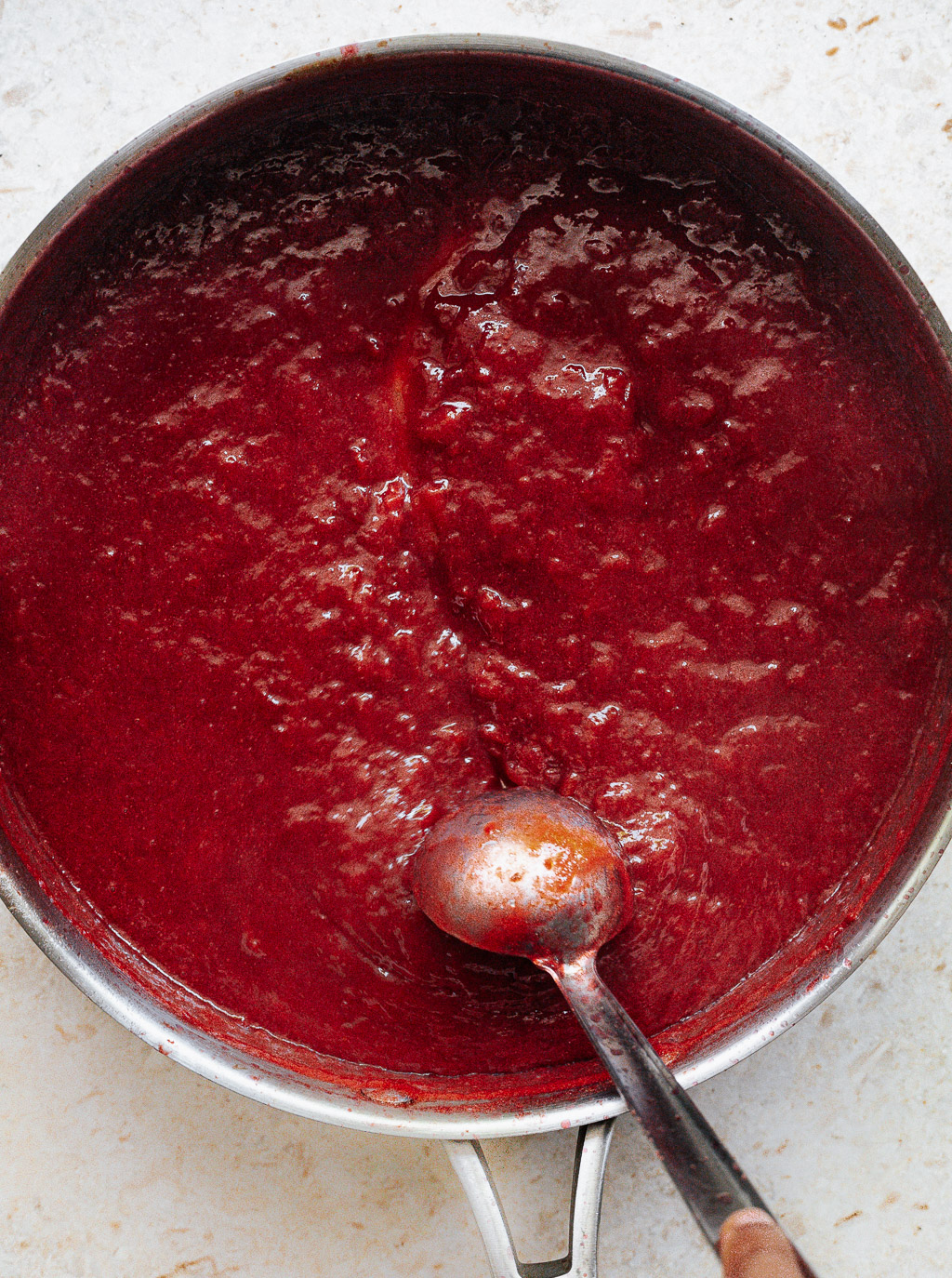
Pan: Dig out the widest pan that you own to make your jam in. This is not crucial but if you’re going to put in the effort, you may as well optimize the results. The wider the pan, the quicker the juices will evaporate, and the quicker your jam will thicken (for fresher flavour, remember?)
Blending/keeping them whole: now this is entirely up to personal preference. I’m usually a ‘with bits’ girl, but here’s my reasoning for why I blend the plums. When you reduce sugar quantities in jam, and especially to the amount that I have, you need to pull out all the tricks to get it to the right consistency; for it to set. Leaving them unblended as big chunks would mean that you have the fruit and water components separate. Blending on the other hand makes the mixture homogeneous and thick – basically an advantage right from the get-go. With soft fruits like strawberries that will break down quicker, blending won’t be necessary. Fruits like grapes and plums really benefit from it.
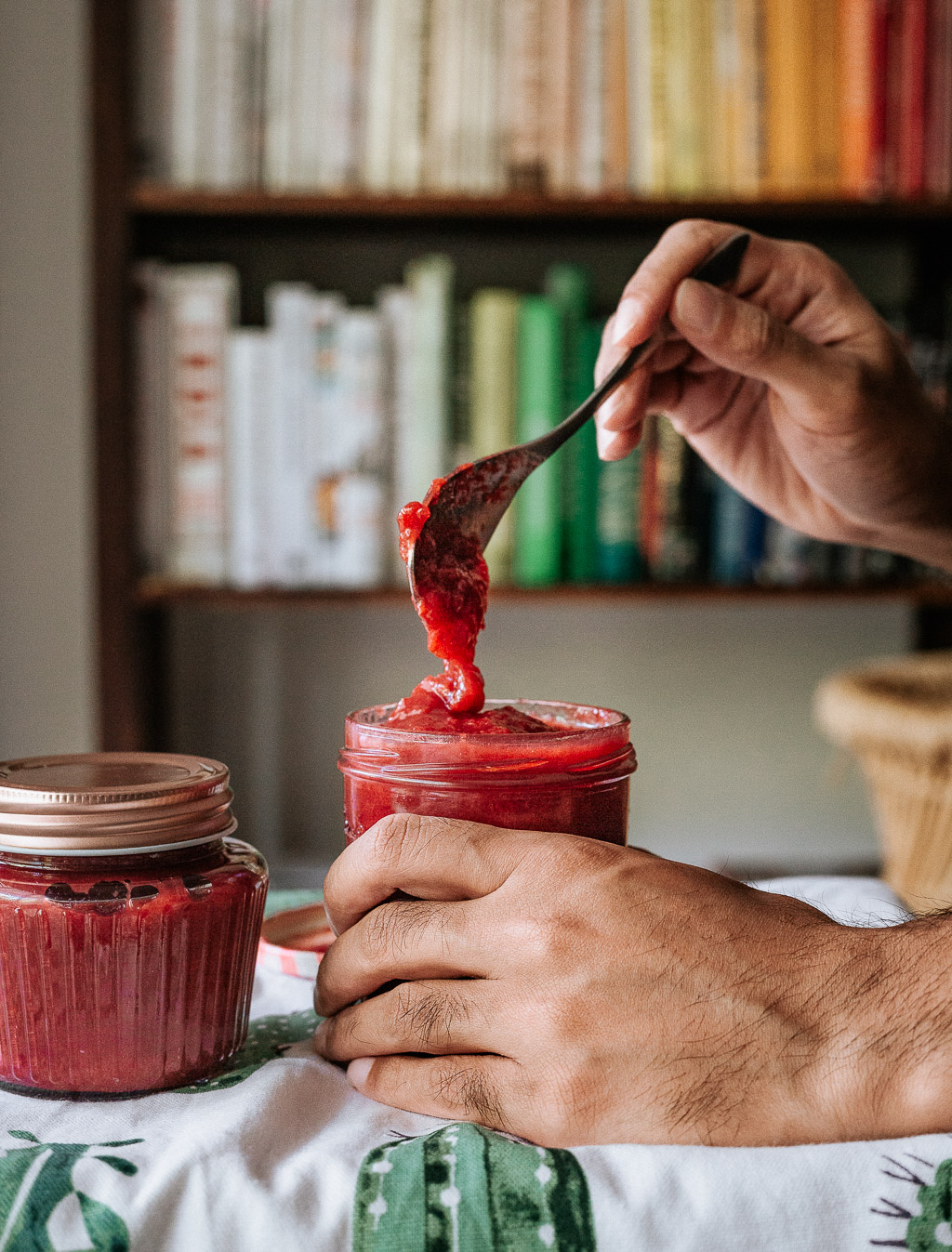
Lemon: lemon juice brings out the flavour of the fruit in jam. Typically, you’d squeeze in about half a lemon’s worth of juice for this amount of jam. I found that especially with plums, they make the already lip-puckering fruit even more intensely tart, and there’s also the thing of reduced sugar here – you’re just going to be adding to the sourness. Having said that, I do enjoy the freshness of it, which lemon zest achieves in the best possible way.
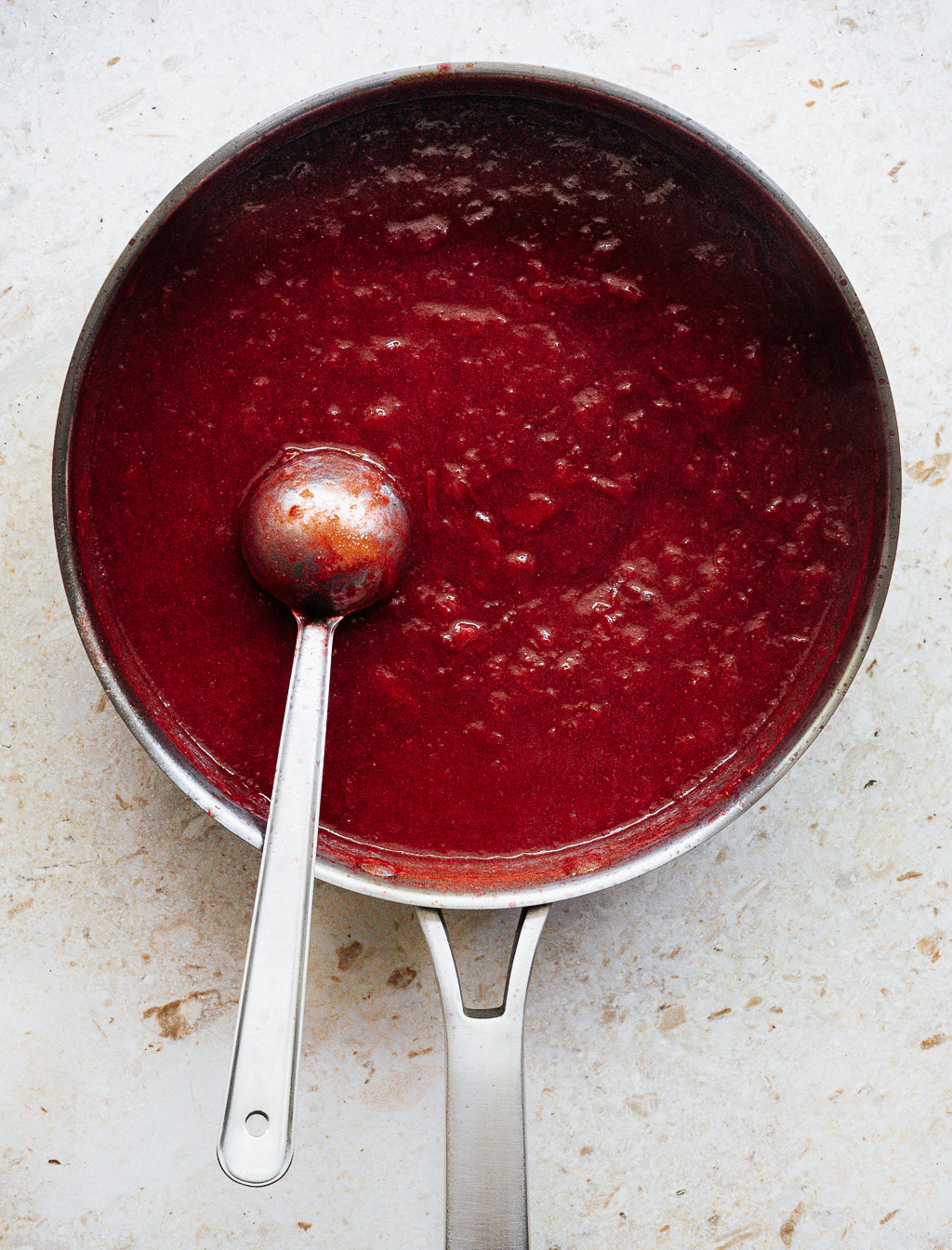
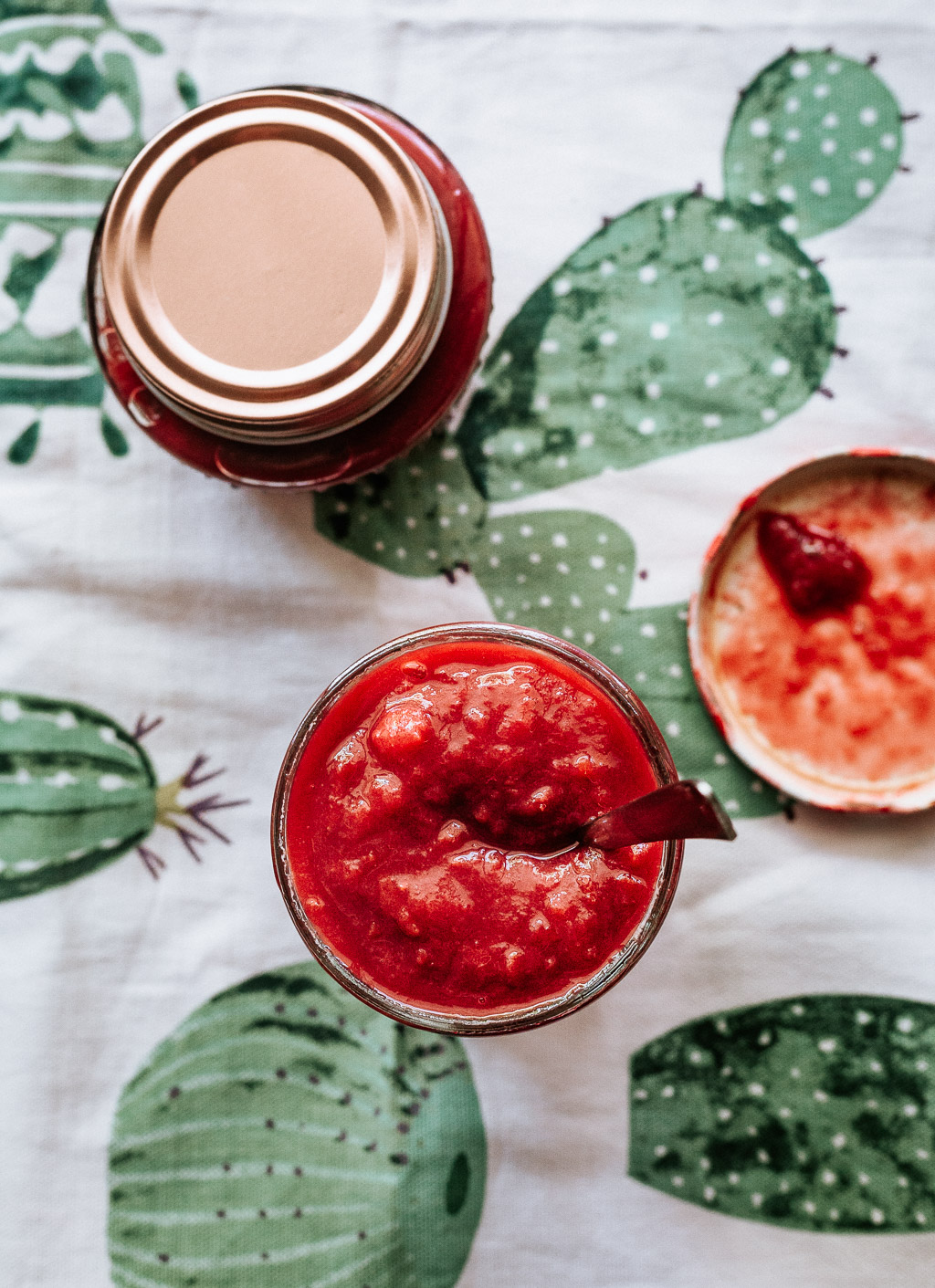
LOW-SUGAR MACERATED PLUM JAM
Ingredients
- 1 kg ripe plums
- ½ cup sugar
- Zest of 1 lemon
Instructions
- Chop and pit the plums: if they’re the loose-stone variety, the stones should be easy to yank out when you halve and twist them. The variety I used didn’t budge when I tried this, so I cut around the stone and removed as much of the fruit as possible.
- Macerate the plums: Toss the plums with sugar and lemon zest in a bowl. Hands are best for the job. Refrigerate for at least 10 hours (or up to 24 hours). Longer the better.
- Add the plums and the juices in the bowl to a blender and coarsely blitz.
- Cook in a wide pan over a medium-high heat until the jam thickens and reduces by almost a third. Depending on the width of your pan and the amount of heat, this should take anywhere between 15 - 25 mins.
- Stir frequently and skim off any white scum that comes to the top (just take out the bigger clumps that float around the edges of the pan and leave the rest).
- A good way to test whether it has thickened and set is to run a spatula through the jam in the pan. If it leaves a clear trail and the jam takes 1-2 seconds to flow back in, it’s done. It will continue to thicken as it cools and also further in the fridge.
- Taste the jam after it has cooled. If it’s too sour for your liking, put it back on the heat and stir in some powdered sugar.
- Cool completely to room temperature, then decant into bottles and refrigerate. Can be kept refrigerated for up to a month.



Leave a Reply